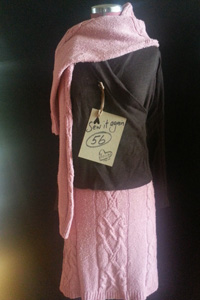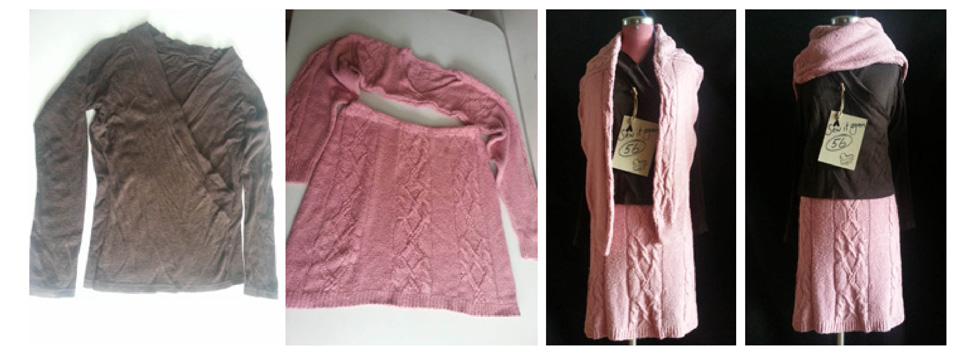 This was a knit fit for refashion. You know those long jumpers that were fashionable in the ‘90s? This was one of them that I chopped and changed into a skirt and scarf.
This was a knit fit for refashion. You know those long jumpers that were fashionable in the ‘90s? This was one of them that I chopped and changed into a skirt and scarf.
The story of your clothes – where they come from, who made them and what from – suddenly became relevant all over the world after fashion’s footprint was set alight by the devastating Rana Plaza fire in which 1129 people died on 24 April last year.
This year on April 24, Fashion Revolution Day will remember those workers lost for the sake of fast fashion at cheap price.
A Choice magazine article on ethical fashion, Australians spend $2288 on clothing and footwear this year – but it’s almost impossible to discover the clothing supply chain of its origins.
“Based on value, 92 per cent of clothes sold in Australia are imported, according to the Council of Textiles and Fashion Industries of Australia. While China still dominates the textiles market for imported clothes, imports from low cost countries such as Bangladesh and Cambodia have been increasing at a rapid pace,” says Jemma Castle in the Choice article.
“But following the Bangladesh factory collapse last April, consumer concern has resulted in some steps in the right direction. There’s been a shift in the ethics of the industry over the past six to 12 months, argues Paula Rogers, an international fashion supply chain consultant. ‘I’ve never seen retailers want the information (about their suppliers) so much. They’ve never asked for codes of conduct before,’ she says.”
But sweat shops aren’t excusive to low-wage countries. Choice says: “It’s likely any clothes you wear with a label saying Made in Australia were made by an outworker in a backyard sweatshop, perhaps not far from where you live or work.”
In the absence of an ethical supply chain for buying new – the options of renting or swapping clothing, buying vintage/second-hand and from op shops – bring some integrity, ethics and sustainability to bear on what you wear.
Then of course there’s refashioning something that already exists into something fresh, using old-fashioned home-sewing techniques – which is what I’m doing with Textile Beat and Sew it Again this year as a way of demonstrating a different way of dressing.
This long V-neck silk jumper was an op shop find which I cut off under the arms and reshaped as a skirt. The sleeves and shoulders were left together and neatened into a long strip to become a scarf wrap that can be worn in a variety of ways. The brown wool top was a wrap-around with a side tie, which I cut off and sewed the body together for a more conventional and easy-to-wear style.
